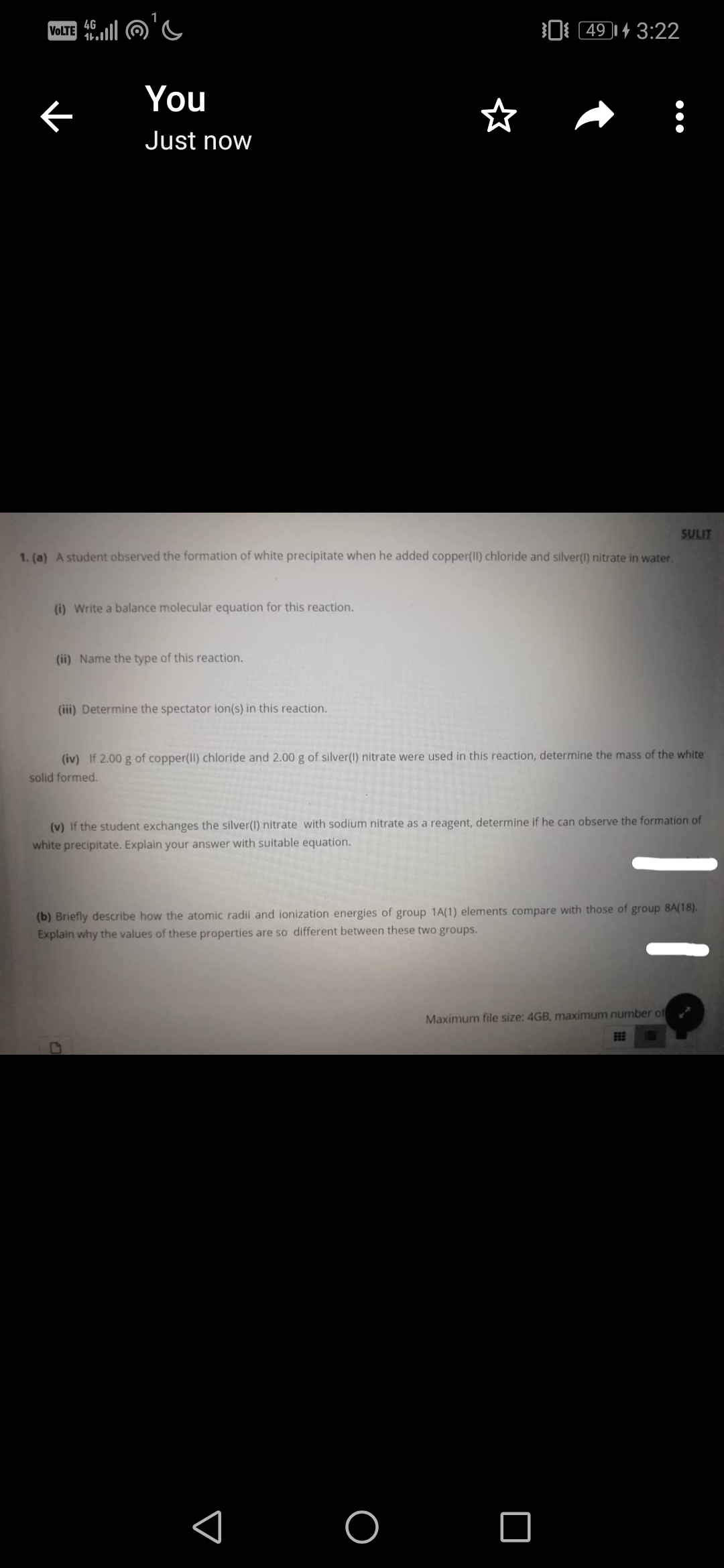SULIT 1. (a) A student observed the formation of white precipitate when he added copper(II) chloride and silver(1) nitrate in water. (i) Write a balance molecular equation for this reaction. (ii) Name the type of this reaction. (iii) Determine the spectator ion(s) in this reaction. (iv) If 2.00 g of copper(II) chloride and 2.00g of silver(1) nitrate were used in this reaction, determine the mass of the white solid formed. (v) If the student exchanges the silver(l) nitrate with sodium nitrate as a reagent, determine if he can observe the formation of white precipitate. Explain your answer with suitable equation. (b) Briefly describe how the atomic radii and lonization energies of group 1A(1) elements compare with those of group 8A(18). Explain why the values of these properties are so different between these two groups. Maximum file size: 4GB, maximum number of BHE
Thermochemistry
Thermochemistry can be considered as a branch of thermodynamics that deals with the connections between warmth, work, and various types of energy, formed because of different synthetic and actual cycles. Thermochemistry describes the energy changes that occur as a result of reactions or chemical changes in a substance.
Exergonic Reaction
The term exergonic is derived from the Greek word in which ‘ergon’ means work and exergonic means ‘work outside’. Exergonic reactions releases work energy. Exergonic reactions are different from exothermic reactions, the one that releases only heat energy during the course of the reaction. So, exothermic reaction is one type of exergonic reaction. Exergonic reaction releases work energy in different forms like heat, light or sound. For example, a glow stick releases light making that an exergonic reaction and not an exothermic reaction since no heat is released. Even endothermic reactions at very high temperature are exergonic.

Step by step
Solved in 3 steps with 1 images









